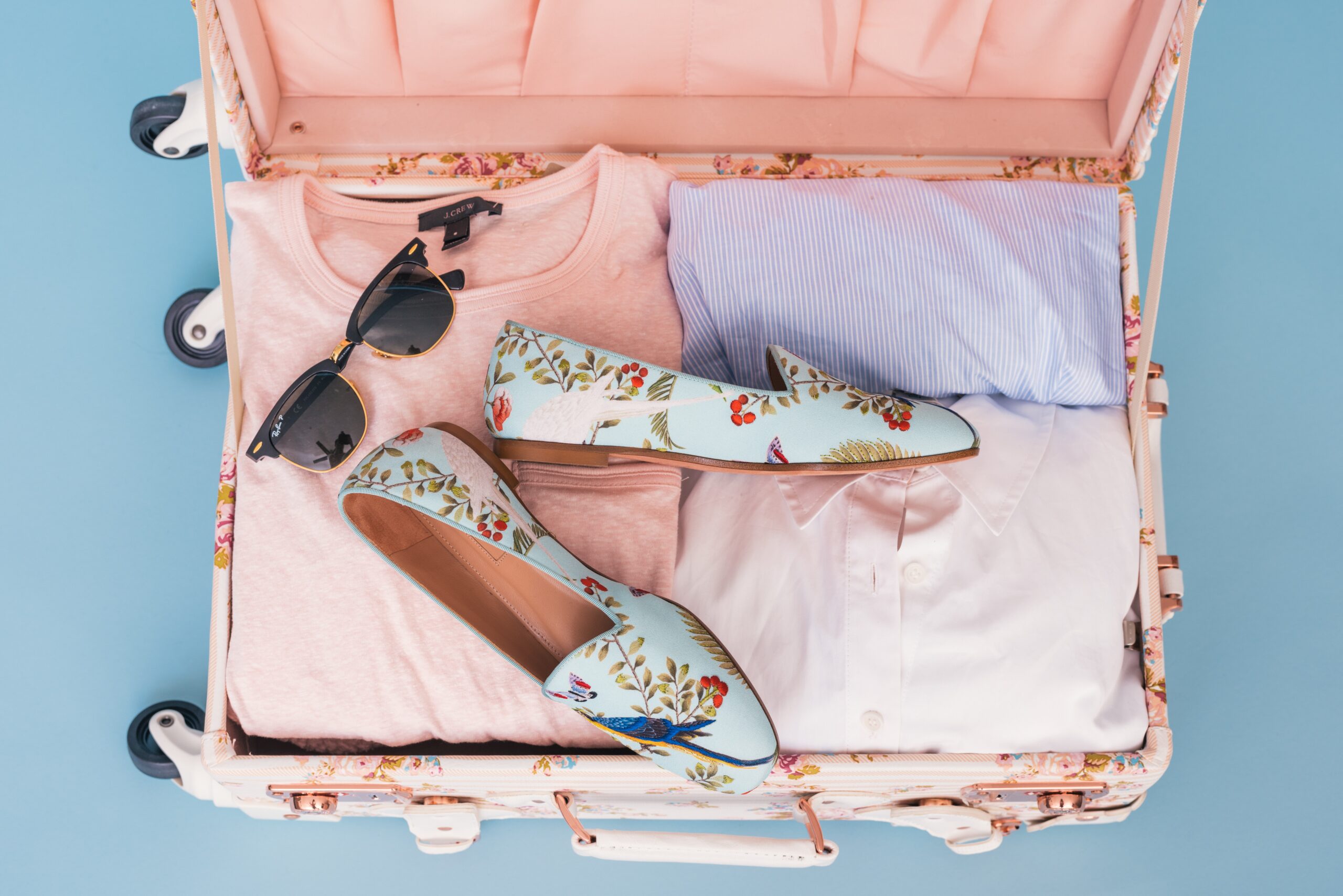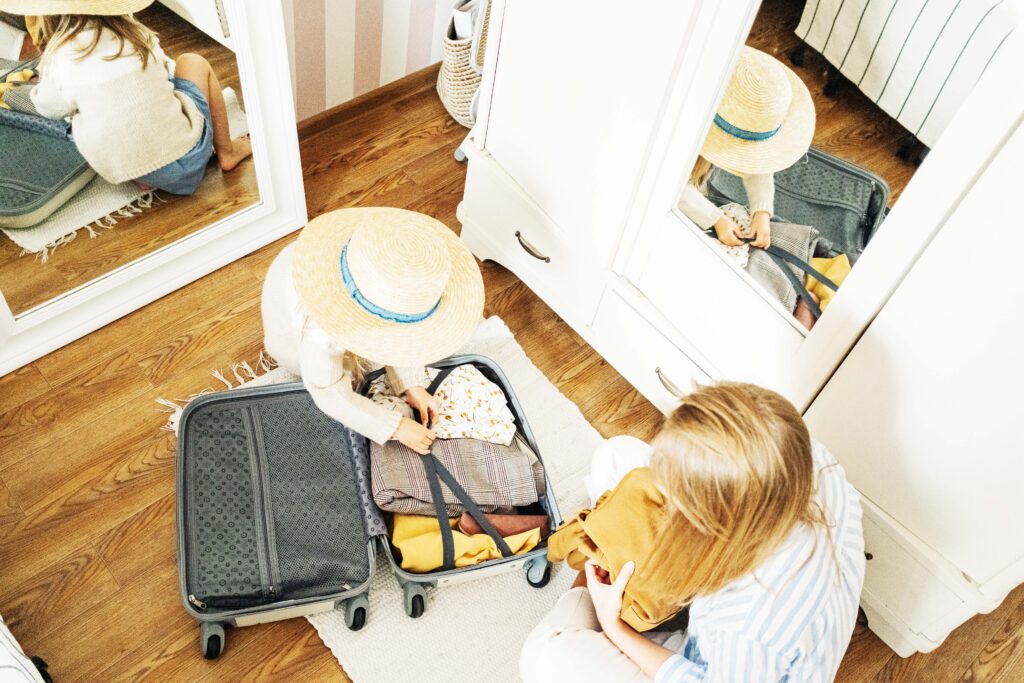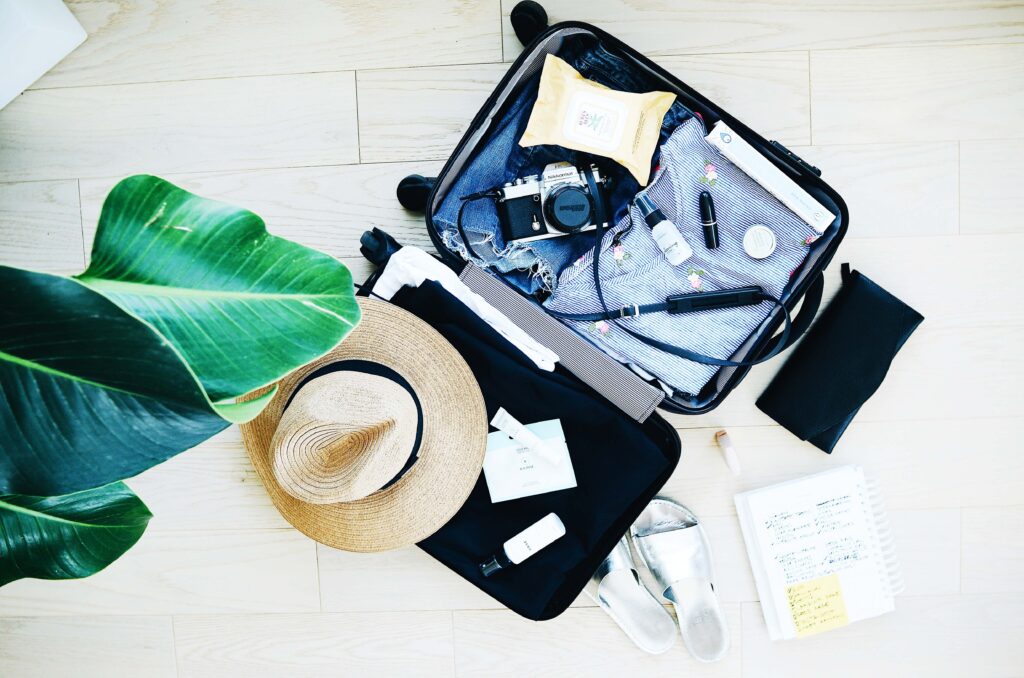Lighten UP! Say Goodbye to Overpacking Suitcase Woes

by Stefanie Michaels
I’m a light packer, because after years of lugging check-in bags, waiting for bags due to missed or delayed connections and actually losing expensive suitcases all together, I’ve learned how to pack at least two weeks into a carryon. Yes, TWO WEEKS! (Once I achieved this on a European ski trip).
So, how do I do this? I use the tips I share below, and combine those with a simple product, space saver bags to compress items in my bag to create extra space.
When packing your suitcase for a trip, it’s important to be selective about what you bring with you in order to avoid overpacking. In fact, I always suggest leaving behind things like soaps and shampoos if heading to a city, then purchasing it there.
By the time you add up checked baggage and overweight bag fees, you might as well have left them home. That is, unless you are traveling to the outback, and then who cares about shampooing anyway!
Here are a few items that you can consider leaving behind:
- Heavy books and magazines: You can read e-books or use apps like Audible to listen to audiobooks instead. Just make sure you don’t leave electronics behind going through TSA or on the back of the seat in front of you.
- Multiple pairs of shoes: Stick to a few versatile options that can be mixed and matched with different outfits. I typically bring one pair of walking shoes, a pair of low heals that can transition from day to night, and a pair of flip-flops for the pool and beach.
- Excess toiletries: If you have to…just bring travel-sized versions of the essentials, like toothpaste, shampoo, and soap. Or, as I noted above, ditch them completely and purchase at your destination. I then, leave them behind.
- Duplicate items: Avoid packing multiple versions of the same thing, like numerous t-shirts or pairs of jeans. I usually bring one pair of jeans, a pair of leggings— either I wear on the outbound plane, a few tops, a couple of skirts, and dresses. Why pack so lean? Because, knowing you have a carry-on with space makes shopping overseas for cute items way more fun!
- Bulky items: Leave behind anything that’s big and bulky, like a sweater or coat that you won’t need in a warm climate. For the air-conditioned plane, I use a light sweatshirt jacket and if you have to bring something, use a space saving bag to make it as small and compact as you can.
- Irreplaceable or expensive items: Leave at home anything that would be hard to replace or costly to lose. In fact, I never bring anything anymore of value, mostly opting for costume jewellery instead. First, you become a target and secondly, you become a target. So, why not just go bling-less and feel safe instead.
- Over the Counter Medications: If your travel to a different country, OTC medication might not be available, is a good idea bring a prescription instead. Always check with the country you are heading to and see what is acceptable to bring in.
- Bulky cosmetic cases: Unless they are thin, skip it. I’ve opted for ziplock plastic bags on occasions, when I needed extra space savings. Plus, TSA will thank you for using them.

Did you know?
Before the invention of modern suitcases with wheels, travelers used to carry their luggage in trunks or chests, which were heavy and difficult to transport.
In the early 20th century, Jesse Shwayder invented the first modern suitcase with a lightweight design and a durable, hard-sided exterior made of vulcanized fiber. He called his invention the “Samsonite,” after the biblical figure known for his strength and durability. The Samsonite suitcase was an instant hit with travelers, setting the standard for modern luggage design.
Today, Samsonite is still a leading brand in the luggage industry, and the name is synonymous with quality and durability.
A little history:

The history of the suitcase dates back to the late 18th century when people started using portable containers to carry their belongings while traveling.
The early bags were usually made of leather and were often quite bulky and heavy. Over time, new materials such as cardboard, metal, and plastic were introduced, making suitcases lighter, more durable, and easier to carry.
By the mid-20th century, the modern-style suitcase with a telescoping handle and wheels had become widely popular.



